Windows Event Log (Event Viewer) is a Windows feature showing logs about your system’s hardware and software events. It usually doesn’t take much system resources. However, some users have reported that the Service Host: Windows Event Log process is consumes high CPU, Disk, Memory or Power usage on their computers.
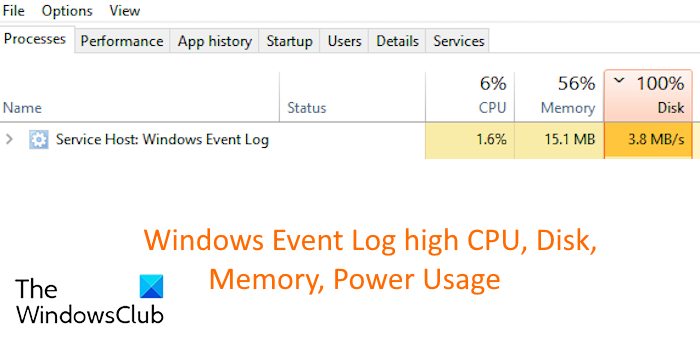
If you are experiencing the same problem, this post will show you how to fix it.
Windows Event Log high CPU, Disk, Memory, Power Usage
If the Windows Event Log process is taking a high CPU, disk, memory, or power usage on your computer, here are the methods to fix the issue:
- End the Windows Event Log task from Task Manager.
- Stop the Windows Event Log service.
- Clear Event Viewer logs.
- Rebuild the WMI Repository.
1] End the Windows Event Log task from Task Manager
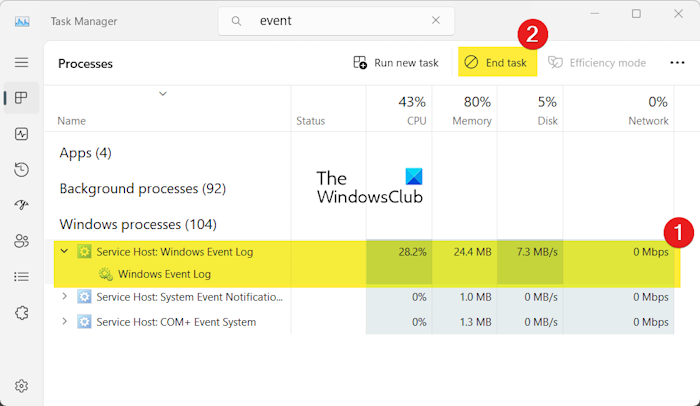
You can try closing the Windows Event Log task if it continues to consume a high CPU and other resource usage. It is safe to end the task as the logs are solely for diagnostic purposes and can be disabled if it’s of no use. Here’s how you can do that:
- First, open the Task Manager using CTRL+SHIFT+ESC.
- Now, from the Processes tab, select the Service Host: Windows Event Log task.
- Next, press the End task button to close the task.
After some time, you can restart the Windows Event Log service using the Services app and see if the issue is fixed.
Read: Service Host Network Service High network usage
2] Stop the Windows Event Log service
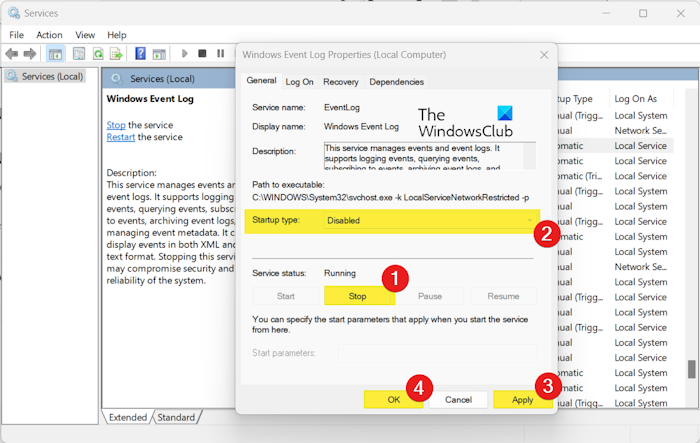
Another method to disable Windows Event Log on Windows is to stop the respective service. To do that, you can follow the steps mentioned below:
First, open the Run command box using Win+R and enter services.msc in its Open box to quickly launch the Services app.
In the Services app, scroll down to the Windows Event Log service and select it.
Next, right-click on the service and select the Properties option.
Now, click on the Stop button to stop the service. Also, set the Startup Type of the service to Disabled.
Once done, press the Apply > OK button to save changes. This should fix the issue for you.
See: Service Host: Local System high CPU or Disk usage on Windows.
3] Clear Event Viewer logs
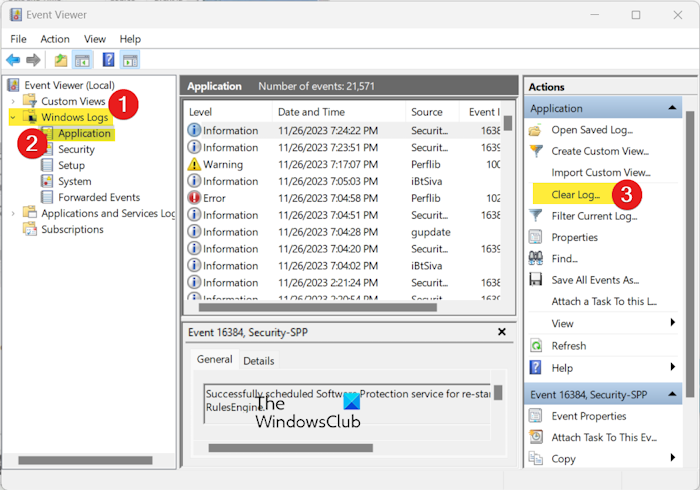
The problem is likely to occur when large log files are causing a high CPU usage of Windows Event Log. If the scenario is applicable, you can clear the logs from Event Viewer and see if the issue is resolved. Here are the steps to do that:
First, press Win+R to evoke the Run dialog box and enter eventvwr in the Open box to open the Event Viewer window.
Now, expand the Windows Logs category in the left-side pane and select the Application option.
After that, press the Clear Log button from the right-side pane.
Next, on the confirmation prompt, you can either select the Save and Clear option (to save the content of the log) or just the Clear option, as per your choice.
When done, repeat the same steps for other categories including Security, Setup, System, and Forwarded Events logs.
Read: Connected Devices Platform User Services high Memory
4] Rebuild the WMI Repository
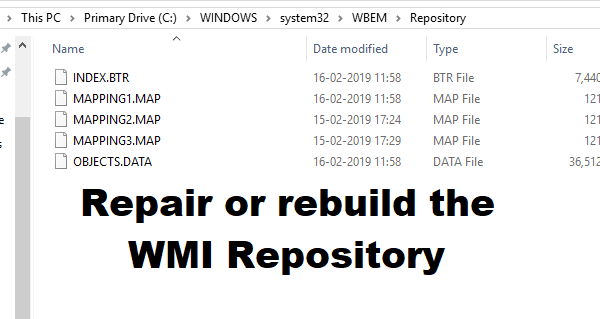
Rebuild the Windows Management Instrumentation or WMI Repository and see if it helps. WMI is a set of specifications from Microsoft to consolidate the management of devices and applications in a network. It is a database that stores meta-information and definitions for WMI classes.
You should now check the CPU usage of Windows Event Log and it should be low.
Read: Service Host Delivery Optimization High Network, Disk or CPU usage.
Note: One affected user on the Microsoft Support forum has reported that closing the APPLE PHOTO service fixed the problem for him. So, you can try doing the same if the above solutions don’t help and see if it works.
Is it OK to disable Svchost?
Service Host (svchost.exe) is a shared service process that is used by processes like Local Service, Network Service, Local System, and Windows Event Log. Now, disabling a critical Service Host process can trigger several issues on your system and cause your system to act unstable. If you experience a high CPU usage of a process using Service Host, open its file location using Task Manager and check if it is Windows\System32. In case not, you can disable and remove it.
How do I find the root cause of high CPU utilization?
To check which process is utilizing a high CPU usage, you can open the Task Manager. Now, go to the Processes tab and see the percentage of CPU utilization for individual processes under the CPU column.
Now read: Service Host SysMain causing High CPU and Memory usage.